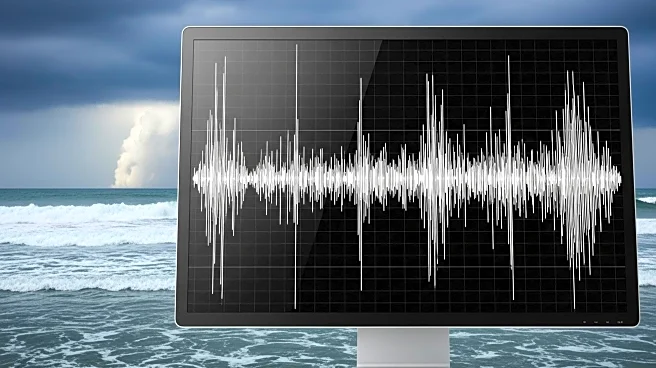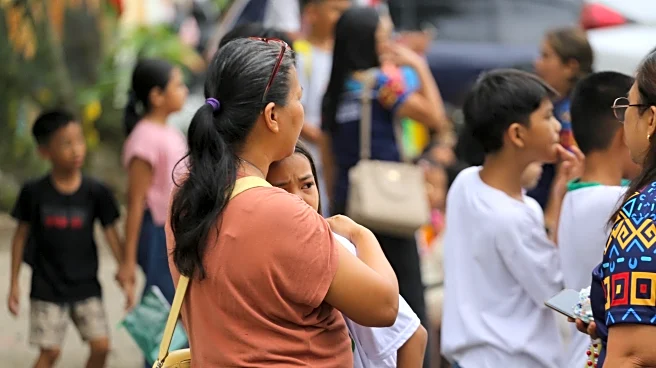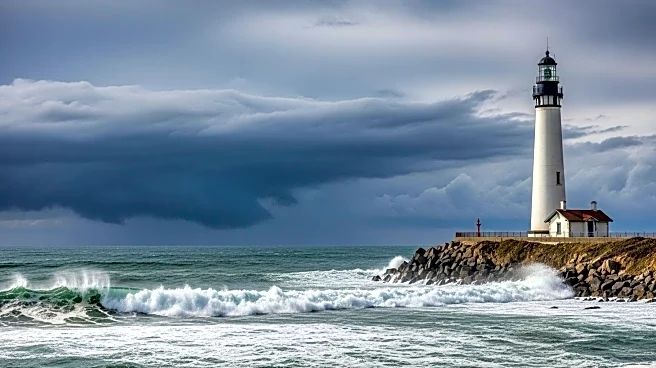What is the story about?
What's Happening?
A powerful 7.4-magnitude earthquake struck off the southern Philippines, resulting in at least two fatalities and significant damage to infrastructure, including a hospital and schools. The earthquake, centered at sea near Manay town in Davao Oriental province, prompted a tsunami warning and evacuations in coastal areas. President Ferdinand Marcos Jr. announced that damage assessments are underway and rescue operations are being prepared. The Philippine Institute of Volcanology and Seismology expects aftershocks and further damage. The earthquake follows a recent 6.9-magnitude quake that caused 74 deaths and widespread displacement in Cebu province.
Why It's Important?
The Philippines is situated on the Pacific 'Ring of Fire,' making it highly susceptible to earthquakes and typhoons. The recent seismic activity underscores the ongoing challenges faced by the government in disaster preparedness and response. The impact on infrastructure and the need for evacuations highlight the vulnerability of coastal communities. The government's ability to manage such crises is crucial for public safety and economic stability, as frequent natural disasters can disrupt local economies and strain resources.
What's Next?
The government is expected to continue assessing the damage and deploying rescue teams as conditions allow. Relief operations will focus on providing temporary shelter and medical care to affected individuals. The potential for aftershocks necessitates ongoing monitoring and preparedness efforts. Local and national agencies will likely review and update disaster response protocols to improve future resilience. International aid and support may be sought to assist in recovery efforts.
Beyond the Headlines
The frequent occurrence of natural disasters in the Philippines raises questions about long-term strategies for disaster risk reduction and climate adaptation. The ethical responsibility of the government to protect vulnerable populations and invest in resilient infrastructure is increasingly critical. Cultural factors, such as community solidarity and volunteerism, play a significant role in disaster response and recovery.
AI Generated Content
Do you find this article useful?














